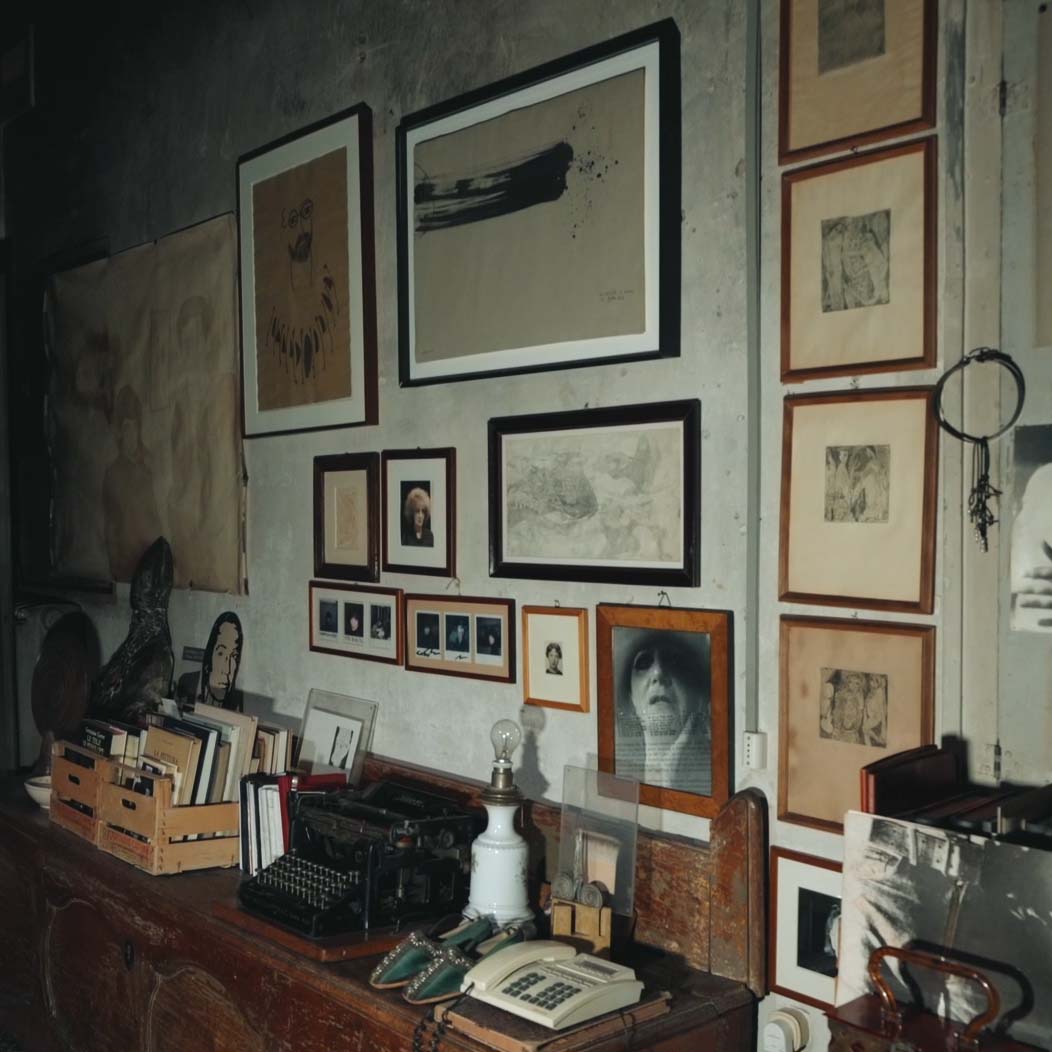An unexpected encounter: The SCHIRN presents works by Alberto Giacometti and Bruce Nauman in juxtaposition.
The SCHIRN is presenting a major exhibition of works by Alberto Giacometti and Bruce Nauman from October 28, 2016 until January 22, 2017. The show brings together two artists from different generations with totally different backgrounds. Giacometti (1901–1966) is regarded as one of the most important classical modern European sculptors. Nauman (*1941) and his multifaceted oeuvre represent the radical upheavals in contemporary art since 1960 and a concept of sculpture liberated from traditional concepts.
Featuring some 70 works in all, this is the first exhibition ever devoted to both, Giacometti and Nauman. Sculptures and paintings by the Swiss artist engage in a fascinating dialogue with videos, sculptures, drawings, photographs, and spatial installations by the US multimedia artist. Giacometti is represented by works from nearly all of his important creative phases, Nauman primarily by his early oeuvre from the 1960s and early 1970s, which followed immediately on the heels of Giacometti’s works.
Isolation and loneliness
Although the two artists never met and never referred explicitly to each other, they have a great deal in common. Both revolutionized the concepts and traditions of sculpture from the perspective of their respective times—Giacometti during the first half of the twentieth century, and Nauman from the 1960s to the present. Both are regarded as individualists who worked consistently from a position of self-imposed isolation and loneliness that has left an indelible imprint on their uncompromising art. Both represent utterly radical artistic standpoints, and both have created works of shocking immediacy that pose lasting challenges for viewers.


Giacometti and Nauman have ventured with their oeuvres into uncharted regions of art and perception. Their search for artistic truth is a quest, the outcome of which is often manifested in the creative process itself rather than in finished works. The two artists have elevated failure, the absurd, the fragmentary, and the unheroic to the status of essential elements of their art. The art of both Giacometti and Nauman revolves around the human being. Giacometti was concerned consistently and almost exclusively with the human figure in his sculptures and paintings, and he developed an original human image of his own with his unmistakable style of figuration, especially during the years after 1945.
Radical artistic position
Bruce Nauman’s work during the 1960s and 1970s was focused above all on the human body (primarily his own), which he took as the point of departure for an investigation into fundamental questions about human nature and the conditions governing human existence. The exhibition enhances our grasp of the oeuvres of two outstanding representatives of the art of the twentieth and twenty-first centuries. Giacometti becomes recognizable as a pioneer who paved the way for important developments in art after the 1960s and regains certain aspects of his original radical artistic position, whereas Nauman’s outstanding importance as a sculptor is made clear and historically comprehensible in a different way.

The exhibition at the Schirn presents works from leading museums and collections in the United States and Europe, including the Guggenheim Museum in New York, the San Francisco Museum of Modern Art, the Walker Art Center in Minneapolis, the Hirshhorn Museum and Sculpture Garden in Washington, D.C., the Tate in London, the Centre Pompidou in Paris, the Fondation Alberto et Annette Giacometti in Paris, the Fondation Marguerite et Aimé Maeght in Saint-Paul de Vence, the Louisiana Museum of Modern Art in Humlebæk, the Fondation Beyeler in Basel/Riehen, the Lehmbruck Museum in Duisburg, the Neue Nationalgalerie in Berlin, and the Hamburger Kunsthalle.
The relationship between the figure and space
“Although sculpture plays a leading role in the oeuvres of both Giacometti and Nauman, the two artists have little in common in terms of media, materials, or ‘style.’ More closely related are the strategies they employ in the use of artistic resources, their tendency to reduce representation to the point of disappearance, and their constant striving to approach emptiness and nothingness—as well as the questions they raise within the context of their investigations into the relationship between the figure and surrounding space or of the body and its parts,” explains exhibition curator Esther Schlicht.

Non-human living sculptures by Hans Haacke and Pierre Huyghe
In his early work, HANS HAACKE already integrated animals and plants as co-actors into his art. In that way he not only laid the foundations for a...

CURATOR TALK. CAROL RAMA
SCHIRN curator Martina Weinhart talks to Christina Mundici, director of the Carol Rama Archive in Turin, editor of the first Catalogue Raisonné and...

Freedom costs peanuts
HANS HAACKE responded immediately in 1990 to the fall of the Berlin Wall and turned a watchtower into art.

The film to the exhibition: CAROL RAMA. A REBEL OF MODERNITY
Radical, inventive, modern: The film accompanying the major retrospective at the SCHIRN provides insights into CAROL RAMA's work.

Now at the SCHIRN: Hans Haacke. Retrospective
A legend of institutional critique, an advocate of democracy, and an artist’s artist: the SCHIRN presents the groundbreaking work of the compelling...

Carol Rama’s Studio: A nucleus of creativity
CAROL RAMA determinedly forged her own path through the art world. Her spectacularly staged studio in Turin was opened to the public only a few years...